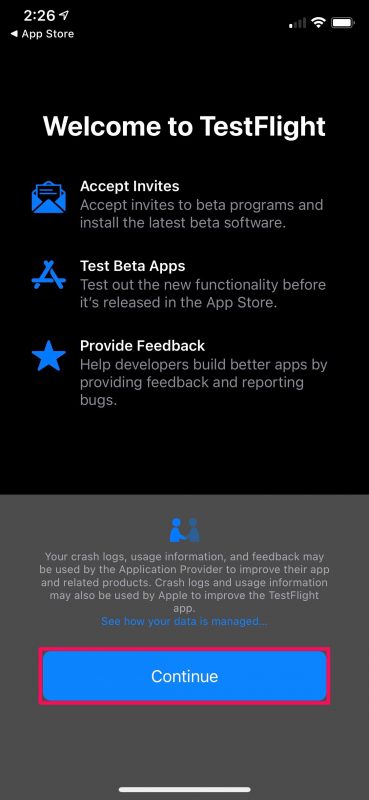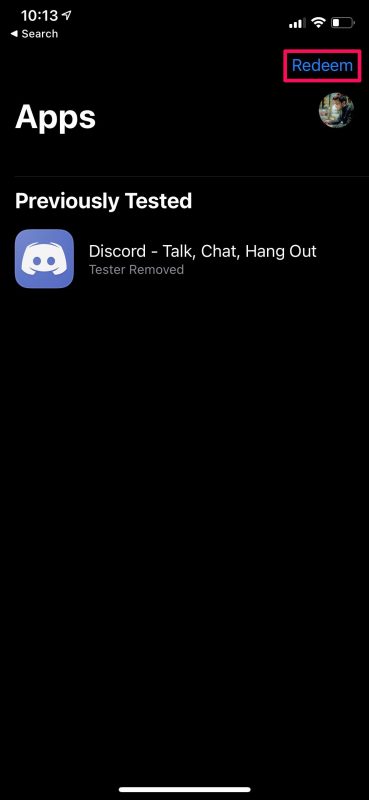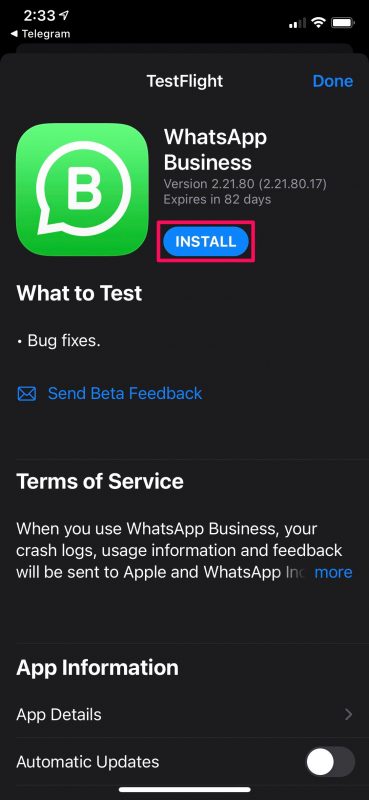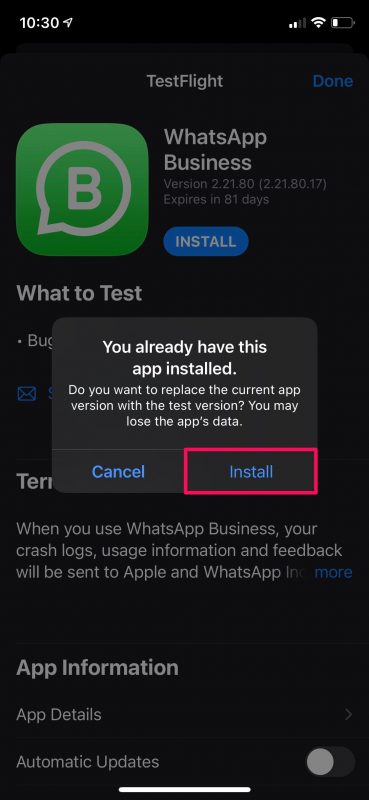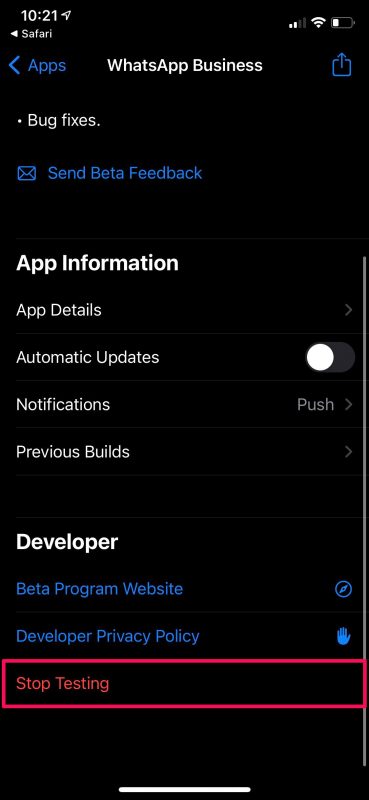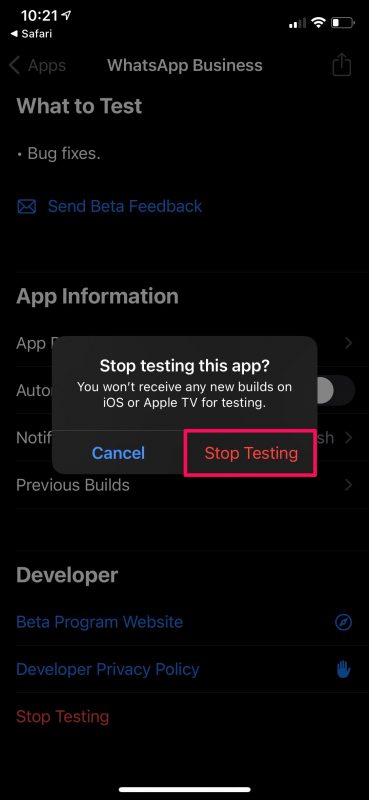How to Beta Test iOS Apps with TestFlight

Have you ever wanted to try out beta versions of your favorite apps? Perhaps, you want to get early access to certain app features that the developers are working on? TestFlight makes it easy to beta test apps on iPhone and iPad, so let’s review how it all works.
For the unfamiliar, Apple offers an app called TestFlight that allows developers, beta testers, and even regular users to try out test versions of apps that haven’t been published on the App Store yet. This essentially gives you early access to new features weeks or sometimes even months ahead of the public release. Even though they tend to be buggy and prone to crashes, a lot of iOS and iPadOS users seem to be interested in installing beta versions of their favorite apps. And to be clear, this is separate from the broader iOS / iPadOS beta programs, as rather than only beta testing the operating system, you’re beta testing individual apps. So, want to be a beta tester yourself and help out the developers? In that case, read on to see how you can test iOS apps with TestFlight on your iPhone and iPad.
How to Beta Test Apps on iPhone & iPad using TestFlight
Before you get started, we’d like to point out you can’t access beta tests just like that. You’ll need either a private invite or a public Testflight link to gain access to the beta versions of the app. This depends completely on the app developer, though many developers have public betas to solicit feedback for their apps.
- First, download and install TestFlight from the App Store.

- Now, open the app and tap on “Continue” in the welcome page to access the main menu.

- Unlike the screenshot below, everything will be empty here. Now, if you have an invitation code which is usually sent via email, tap on “Redeem” located at the top-right corner.

- Next, enter the code and tap on “Redeem”.

- If you’re a regular user, you’ll need to find a public TestFlight link. You can browse and find it with a simple Google search. When you have the link, just tap on it to open the invitation in TestFlight. You’ll see a similar page as indicated here. Tap on “Accept”.

- Now, wait for a couple of seconds and the Accept option will change to Install. Just tap on “Install” to continue.

- If you have the public version of the app installed on your device, you’ll get the following prompt to replace the current version with the test version. To confirm and proceed with the installation, simply choose “Install”.

There you go. You’ve successfully installed the beta version of the iOS app on your iPhone.
Where do you find iOS / iPadOS Apps to Beta Test?
If you’re curious where to find apps which you can beta test, you will find there are various resources. App developers typically are the best option to find apps to beta test, but there are services like AppAirport which help to locate apps for beta testing too.
Check out app.airport.community to find apps where you can sign up to beta test.
How to Stop Beta Testing Apps on iPhone & iPad
Most of the time, regular users aren’t gonna keep using beta versions of the apps in the long run. More importantly, if the test version of the app is frequently crashing and not good enough for daily use, you’d want to switch back to the public version. So, here’s how you can do that:
- Head over to the main menu of the TestFlight app and select the app you want to stop beta testing.

- On the app page, simply scroll down to the bottom and tap on “Stop Testing” as shown below.

- When you’re prompted to confirm your action, select “Stop Testing” from the pop-up.

You’re almost there. You will no longer receive updates on beta versions of the app.
Even though you’ve stopped participating in the beta, keep in mind that the beta version of the app is still installed on your device. It won’t be automatically removed from your device. You’ll need to uninstall it manually and then download the public version of the app from the App Store.
You will receive updates for the apps you’re beta testing in the TestFlight app and not the App Store. You can enable automatic updates if you don’t want to bother with it. To do this, just tap on your Apple ID profile icon and then choose Automatic Updates from the settings menu.
Keep in mind that public beta testing for some of the popular apps that you normally use may be full already. Or, the developer may not be looking for beta testers at the moment. You will be informed regarding the same when you click on the invite link. However, keep checking the link often as developers tend to re-open beta slots every now and then.
Also, the developer may choose to remove you from the beta testing program at any point they want to and you basically have no control over it unless there are open slots for public testing. Personally, this happened to me when I beta tested Discord and I’m unable to re-join since the slots are full. If you don’t actively use an app, you may get removed from the beta testing program for that app too, since there are limited slots available.
Are you interested in installing beta versions of apps on your iPhone or iPad? Are you currently beta testing any apps, the upcoming iOS/iPadOS versions, or anything else? Share your experiences with us, and leave your personal opinions and feedback in the comments section down below.

